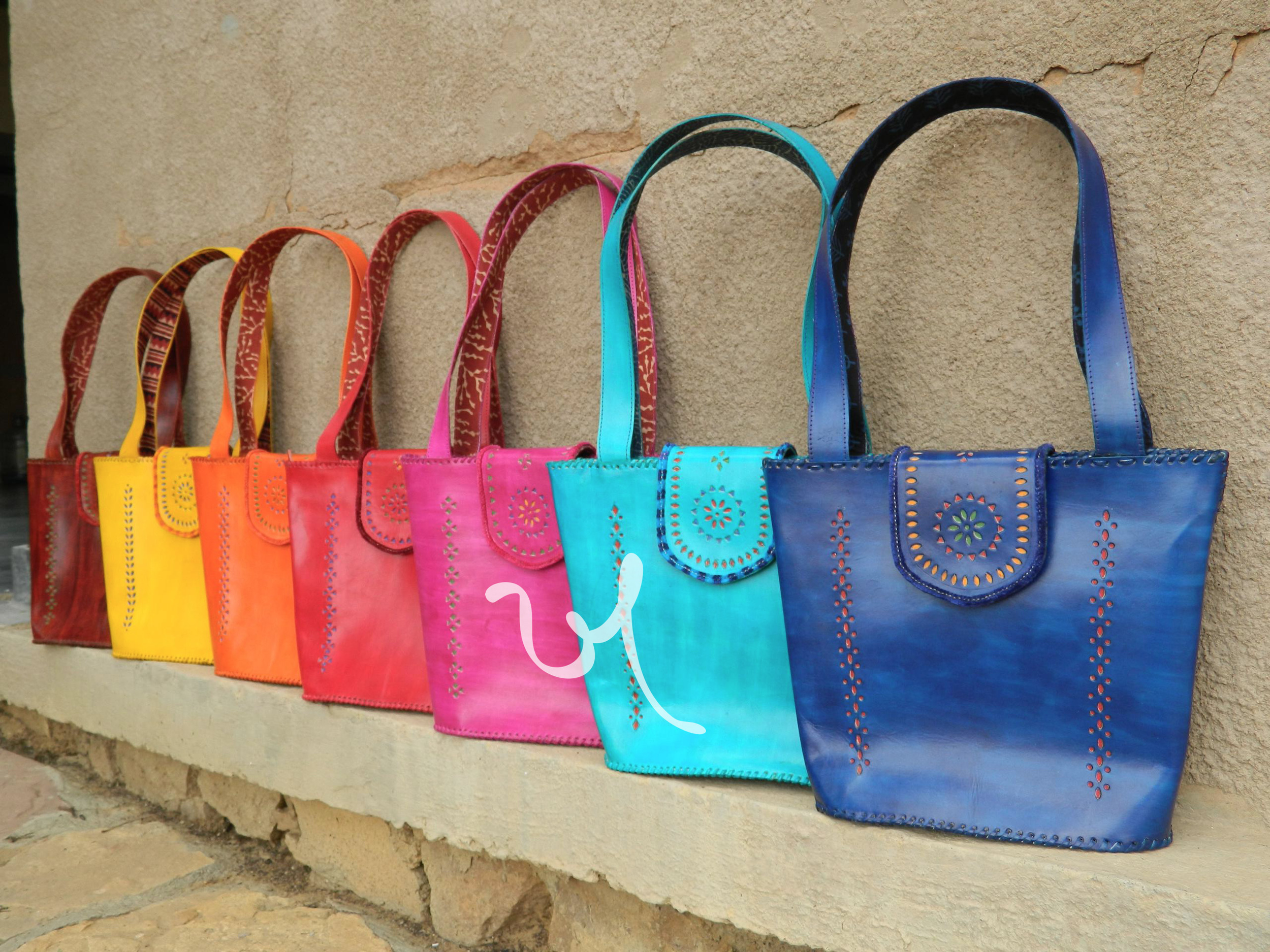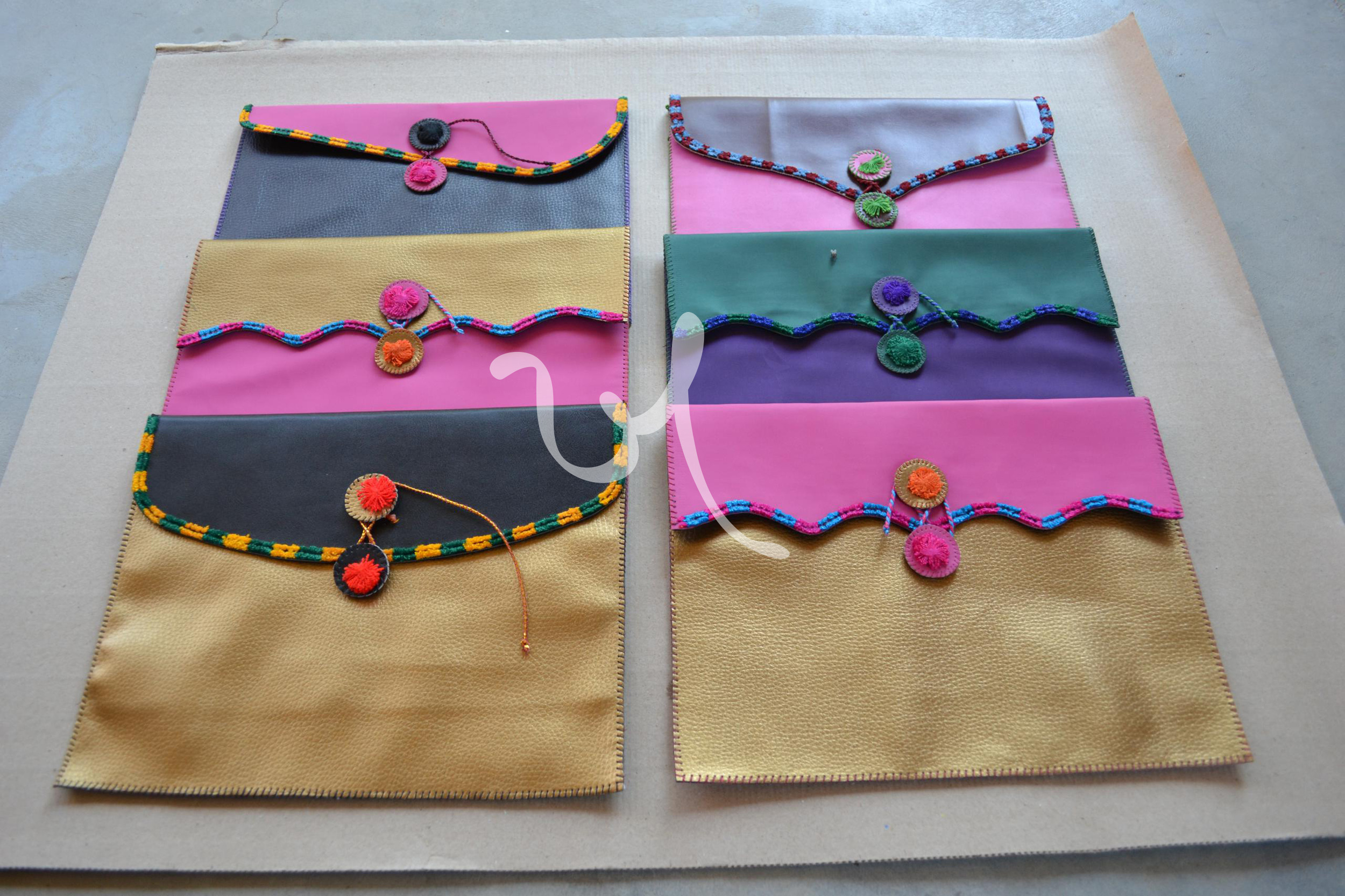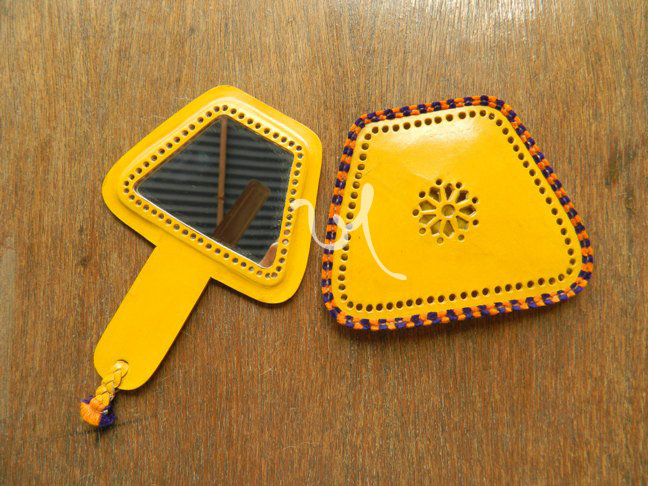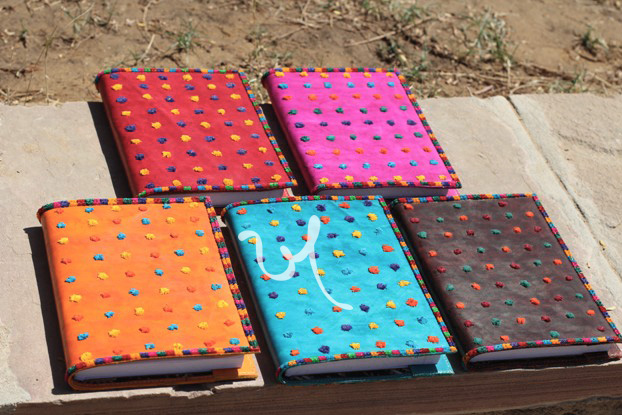Improvising, adapting, expanding
Market Shifts
Till 1980, the leather artisans were producing for the local communities. However, cheaper goods had entered the markets and machines were replacing hand-crafted tools. The relevance of the leather artisan in the village was perishing. Around that time, the government played a crucial role through the Gujarat State Handicrafts and Handloom Organization with its brand Gurjari. They placed orders for handcrafted items with artisanal clusters and promoted them at a national level. This way, the leather goods of Kachchh began to travel outside the region, and the artisans had a renewed means of income.
The coming of Gurjari marked the change from local to national for the artisans of Kachchh. Younger generations joined the craft because it seemed profitable. In the enthusiasm to produce quickly, however, artisans were unable to keep up with the standards expected. Many artisans returned home with rejected goods, discouraged from the craft.
Then in 2001, after the devastating earthquake in Kachchh, aid groups began to rehabilitate the artisans and connect them to an expanded market — national and international. Kachchh later became famous as a tourist’s paradise, and received thousands of visitors each year eager to experience firsthand the vibrant crafts of the region. To accommodate these changes, leather artisans developed universal sizes, patterns, and colour combinations. From the hataar system of a single artisan creating customised and time tested products, they moved to processing large orders with multiple artisans working together.
Words from the artisans
Now we have vehicles to drive to the city, ceiling fans to keep us cool, televisions to keep us entertained, mobile phones to talk to people, soaps to keep ourselves clean, but the spirit and conscience has lost its goodness today, according to me.
Words from the artisans
I spent my life making shoes. I am sixty-five now. If I die, I don’t think anyone in this village will care.
Entrepreneurship and change
The tools leather artisans used changed too. Thirty years ago, the Meghwars received their tools from the local metalworking and woodworking Luhar or Suthar communities. These tools were made to last – each artisan became accustomed to using the same raapi, aari, and thokni for years. Elaborate patterns were cut by hand. Today, standardised tools are readily available, and metal punches with shapely points have replaced the practice of etching entire designs.
No Meghwar today practices tanning. About half the dead animals of Banni are still skinned for leather, but this work is carried out by mixed communities and the hides are sent to other cities for processing.
Businessmen in Bhuj purchase the skins and other by-products of the dead animals. These are preserved in salt and stored in Bhuj, before being sold again and sent for curing in Chennai or Ahmedabad. After industrial tanning, the leather comes back to Bhuj.
Meghwars purchase this readymade leather from the Bhuj market at steep rates. Processed leather can cost up to seven hundred rupees per kilo. Artisans comment that chemically treated leather is not as durable or strong as their handmade “desi chaamda.”
To fulfill demand for lower cost products, some Meghwars have also begun to use artificial leather (Rexine). Surface decoration, once made with real gold and silver stitching, has been replaced with plastic threads which provide a similar look at a lower price.
As they keep up with the times, a deep sense of regret prevails amongst some Meghwars at having lost the kinship of hataar, and a sense of community with each other. Yet, economic mobility has brought other advantages, new independence and undermined caste discrimination.
Metal punches sit atop a Rohi stone
Products made with faux leather Rexine, and metal punches











